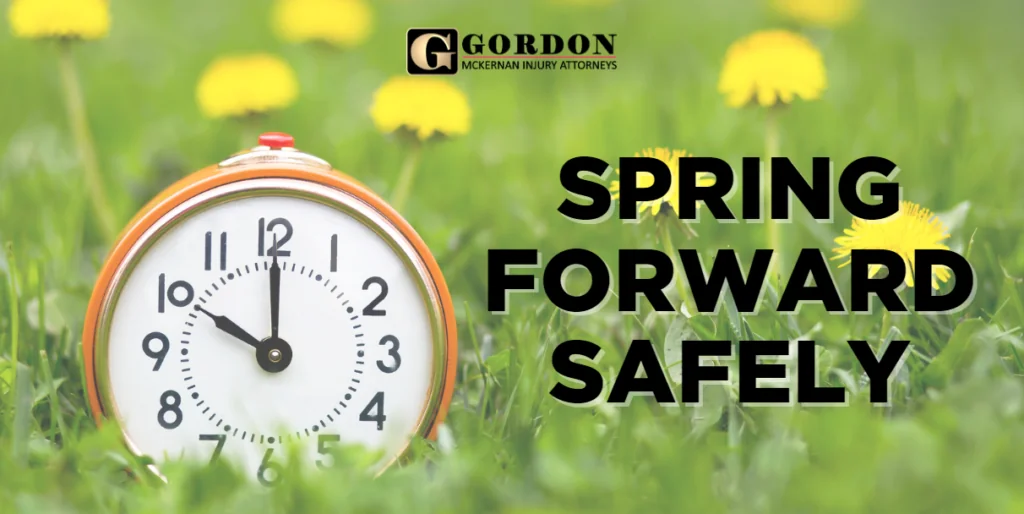Spring Forward Safely: Navigating the Roads on Daylight Saving Time

As the clock springs forward every spring, your morning wake-up call isn’t the only thing to consider. While a later sunrise offers more time for summer fun, it can carry significant consequences on the road. Losing just one hour of sleep can turn routine activities into hazardous endeavors.
Drowsy Driving
Research has shown that darker mornings paired with the drowsiness induced by Daylight Saving Time (DST) contribute to a notable increase in traffic accidents and fatalities. A 20-year study analyzing more than 732,000 fatal crashes showed a 6 percent rise in fatal accident risk in the United States following the transition to DST. The most pronounced impact was during the morning hours immediately following the time change, emphasizing the heightened vulnerability of commuters during this period.
Another study suggests that the proportion of crashes involving sleep-deprived drivers may exceed federal estimates, with 16 to 21 percent of all police-reported fatal vehicle crashes likely attributable to drowsy driving. Considering Louisiana is third in the nation for distracted driving accidents, which includes sleep deprivation, it’s imperative to be acutely aware on your morning commutes following DST.
Simple steps can make a significant difference in reducing the likelihood of accidents:
Safe Practices for Daylight Saving Time
Prioritize Attention: Avoid distractions while driving, particularly during the early morning hours when many drivers may be sleep-deprived. Refrain from eating or drinking behind the wheel, as brief distractions can have severe consequences.
Plan Ahead: Allow extra time for your commute in the days following DST, anticipating potential delays and adjusting your driving accordingly. Avoid heavy foods and medications before driving that may cause additional drowsiness or impairment.
Watch for Warning Signs: Be vigilant for signs of drowsy driving, such as drifting out of your lane or difficulty keeping your eyes open. If you experience these symptoms, pull over in a safe location and take a break or consider swapping drivers.
Pedestrian Precautions: Pedestrians should also exercise caution, particularly near crosswalks in the darker mornings following DST. Wear bright or reflective clothing, make eye contact with drivers before crossing streets and use sidewalks when possible.
Spring Into Safety
As we prepare to set our clocks forward, let’s remain vigilant and prioritize safety behind the wheel. By taking proactive measures and staying alert, we can safely navigate this seasonal transition and minimize the risks of sleep deprivation and drowsy driving.
If you or a loved one are involved in a wreck, know that Gordon McKernan Injury Attorneys is here to support you and help you determine the best way to “spring forward” after an accident.

